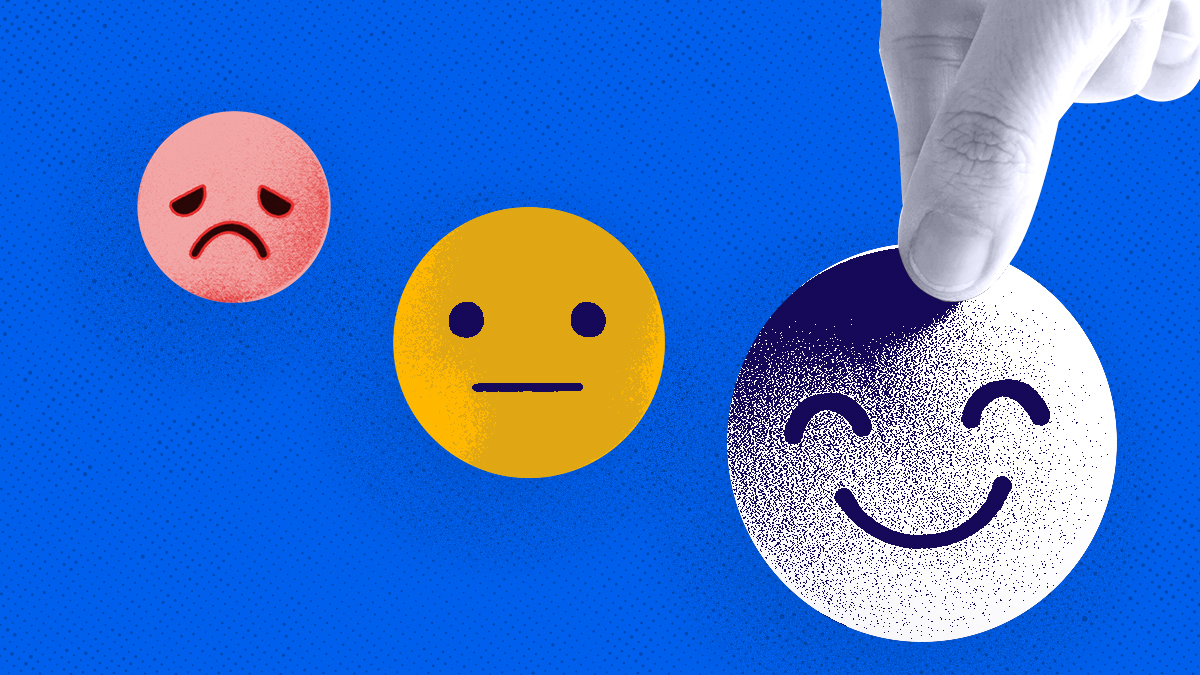Contents

Customer experience (CX) is the complete perception customers have of your brand. It’s a sum of all their interactions with your company across all platforms, online and offline.
In the sea of businesses with similar features and pricing plans, customer experience is becoming a key brand differentiator. The brand that treats its customer best, and delights them at every turn, wins.
Everything from your website, marketing assets, and emails to your product experience and customer service counts. In this guide, we dive deep into what it takes to overtake your competitors with exceptional customer service, and examples of companies doing it.
- The importance of customer experience today
- How to create a better customer experience strategy
- Customer experience best practices
- Poor customer experience practices
- How customer experience differs from customer service
- Customer experience metrics to start tracking
The importance of customer experience today
Your customers already have some kind of experience with you—whether you created that experience on purpose or not. When you’re intentional about making it a positive one, it pays off.
Customers who have a great customer experience are more likely to:
- Spend more. Not only does a positive customer experience increase customer spending by up to 140%, but consumers are willing to pay more for greater convenience (43%) and a friendly, welcoming experience (42%).
- Spread the word. Happy customers will share their story with six or more people, becoming a referral engine for your business.
- Make recurring purchases. As much as 89% of customers say they’d come back to make another purchase if they had a positive experience the first time around.
On the other end of the CX spectrum, customers punish companies that fail to make their experience enjoyable. Around 65% of customers move to a competitor after a poor experience with a brand.
Loyalty from existing customers doesn’t always help with that: 32% of them stop doing business with a brand they loved after just one bad experience. And with more than 90% of customers ditching a brand after two or three negative experiences, repeat offenses are unforgivable.
Customers have spoken: 73% of them point to experience as an important factor in their purchasing decisions, behind price and product quality. In the US, 65% of customers consider a positive experience with a brand more influential than great advertising.
When you prioritize customer experience, you attract loyal customers, increase revenue, and leave competitors behind. Here’s how to make it happen.
How to create a better customer experience strategy
Your customer experience strategy will never be a finished body of work. It’s something you can always get better at. Whether you already have a strategy or you’re starting from scratch, here are the steps you can follow for a strategy every team can follow and rely on.
1) Develop real customer personas
Customer personas, also known as buyer personas, represent your current and potential customers. If you tried creating your buyer personas, you likely included parameters like age and gender.
You may have named it—something like Marketing Mary or HR Henry—and attached a stock photo to it, just like this example does:
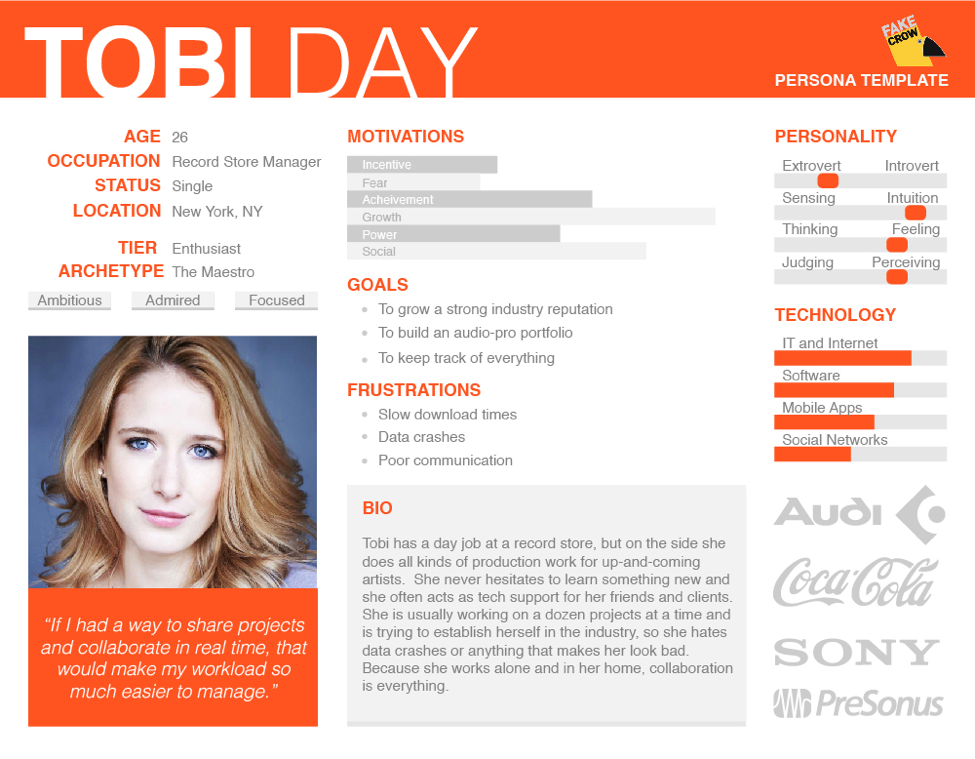
The problem with demographics and a fake photo? It introduces bias and prioritizes your assumptions over customer’s experiences.
“Not every customer who is a founder or a C-suite executive will look the same. Could they have similar pain points? Absolutely. But we don’t need to assign a fake stock photo to give us an idea of who we’re talking to. We have their words and that’s more powerful,” says Adrienne Barnes, founder of Best Buyer Persona.
There’s a better way: listening to, and observing, your customers.
Here are some ways to gather valuable data for your customer persona:
- Interview your customers. Get on the phone with your customers to learn why they bought your product, how they use it, their responsibilities, triggers, and pain points. Adrienne suggests interviewing your best customers, those that had a negative experience, and customers who recently became your customer.
- Listen to call recordings. What do your customers reveal about themselves during sales calls? What about those that contact customer support? Regularly review sales and support call recordings to uncover customer complaints and struggles.
- Observe your customers while they use your site and/or product. Use tools like session recordings and heatmaps to pinpoint any areas of confusion or struggles, as well as experiences that customers enjoy and want more of.
- Survey your customers. Use surveys based on both closed- and open-ended questions in key moments, like after purchase, after contacting customer support, or after a certain number of logins.
- Look for written clues. Customer reviews on sites like Trustpilot and G2, tweets, Instagram posts, forum threads, and more are great sources of candid customer feedback.
By the end of this process, you should be able to define your persona’s roles, responsibilities, ritual, and relationships. You’ll know about their pain points and what they’re looking for.
Here’s a buyer persona example created by Adrienne Barnes to get inspired by:
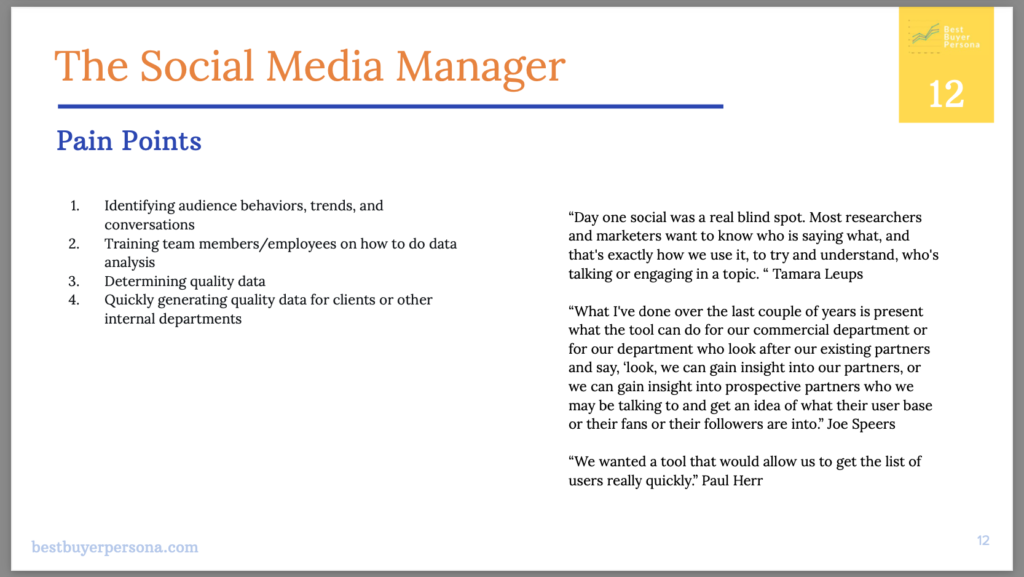
Data-backed definitions and direct customer quotes will help your buyer persona drive your customer experience efforts.
2) Discover customer motivations
Do you know why people choose your brand and products over your competition? What is your competitive edge?
Once you discover what this is, you can double down on it in all aspects of your customer experience, from marketing, messaging, and sales to customer retention and loyalty.
A great example of this comes from Apple. One of their continuity features is the ability to copy text on one device and paste it on another—and Apple users love it:
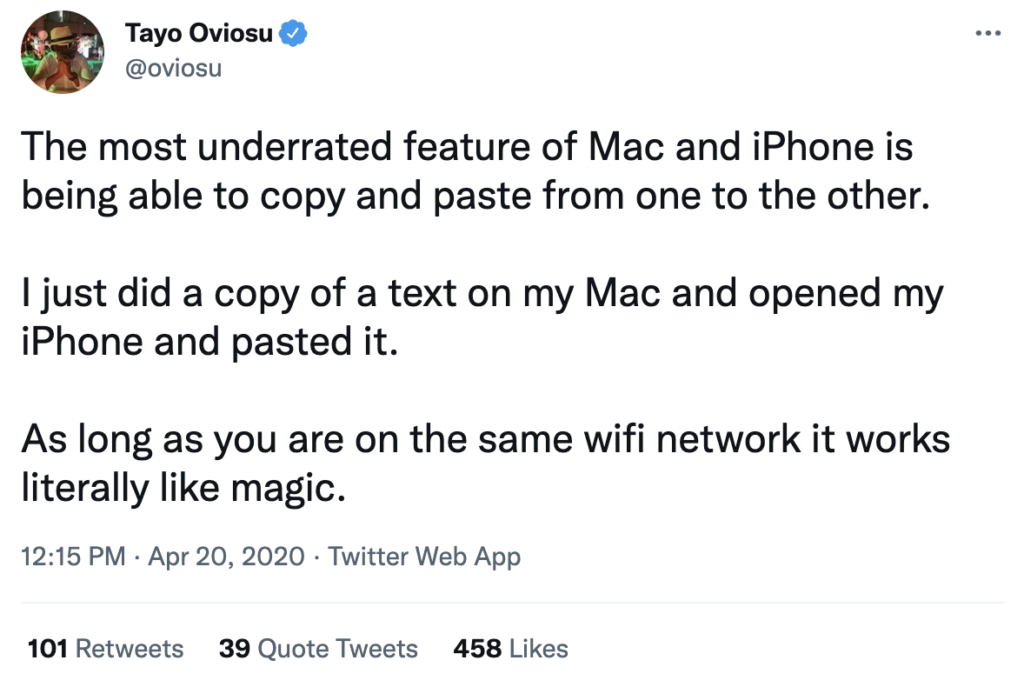
It’s a seamless feature—it’s not obvious, and not something you’d think to look for when buying a new laptop or smartphone. But once you’re an Apple customer, it’s hard to imagine not having it (or to change to a different option).
Superhuman, an invite-only email app, is another example of competitive edge. Superhuman prides itself for “the fastest email experience ever made.”
When they surveyed customers to find out how many of them would be disappointed if they could no longer use Superhuman, they found a pattern:
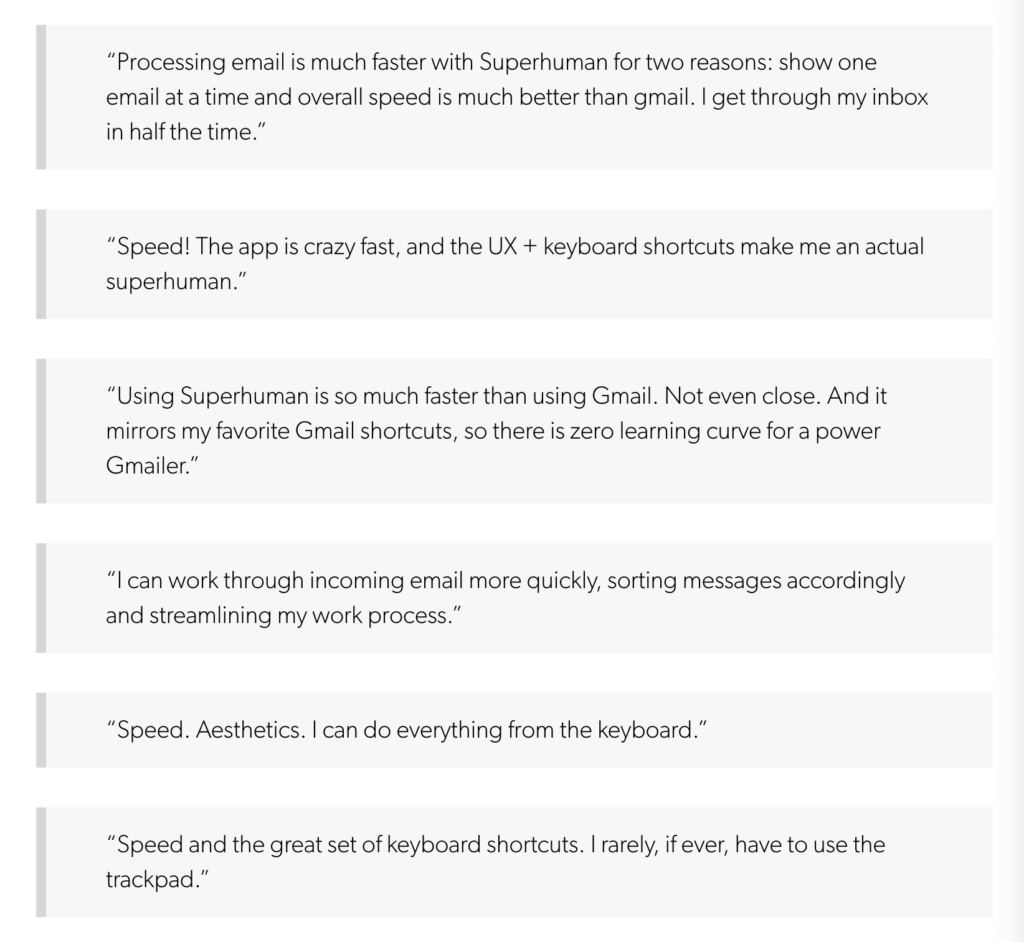
Speed, focus, and keyboard shortcuts were a recurring pattern happy customers mentioned. It’s easy to see why the complete Superhuman experience, from signing up and onboarding to product updates and customer support emails, emphasizes speed and helps customers achieve it.
Finding your competitive edge means understanding what creates genuine value for your customers. It’s what they see as more important than the product’s price, and they struggle to imagine their life and work without it.
Once you know what this is, you can make it the foundation of your CX strategy.
3) Look for customer pain points
When customers decide to sign up for your product, they do so based on your marketing and sales efforts: blog posts, case studies, live demo sessions, chat with a sales rep.
Once they’re in the product, their expectations of it kick in. They want to achieve goals and create results with it. Are they? And if not, what’s standing in their way?
Two main places to look for customer struggles within your product are:
- Customer support tickets. Not only should you stay on top of your customer service questions and issues, but share them regularly with your product and development team.
- Product reviews. Use review sites like G2 to look for reviews from less-than-happy customers. Reviews with three and four stars are a great place to start; they’re from customers who see benefits from the product, but struggle with part of it.
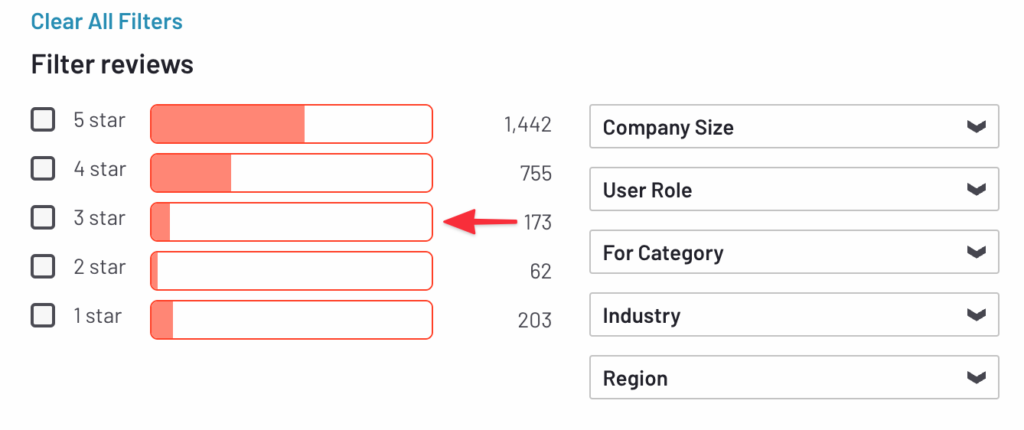
For example, reviews from one accounting software reveal that:
- The web and desktop versions are significantly different and hard to switch between
- It’s not possible to edit multiple entries at once (for example, their categories)
- There’s a steep learning curve for someone that doesn’t have much extra time to learn while working
- The search feature is complicated
Use insights about your product to plan your product updates, features, and releases. On top of that, you can enhance customer experience by using this feedback for ideas to:
- Improve your product onboarding
- Make your help docs easier to find
- Add tooltips and other elements to help users navigate the product
- Create videos and walkthroughs for common questions
Customer feedback is the primary driver of successful CX strategies. By doing this regularly, you’ll show your customers you care about their true experience with the product, and keep making it better.
4) Map out your customer journey
What are all the potential touchpoints between your customer and your brand? Think beyond just their experience as a customer. What about their research? Their interactions with your content? Their behavior as they make a purchase decision?
Each customer engagement is an opportunity for you to delight the person on the other end. Consider customer expectations, feelings, motivations, and potential roadblocks at every stage.
Here are some ways to uncover what matters to your audience at different touchpoints:
- Ask blog readers if they found what they were looking for. This is a great way to learn about the mindset people have as they find your content. You can also ask follow-up questions, like what they liked most or what they’d change.
- Ask pricing page visitors what’s stopping them from buying. You can ask close-ended questions, like “Is our pricing clear?” or “Is anything stopping you from joining?”. Open-ended questions could be “What’s stopping you from buying today?” or “How can we help you choose the best plan for you?”.
- Get customers to rate their customer service experience. Let users rate their chatbot or live chat experience, or send them an SMS survey after a phone call with customer service.
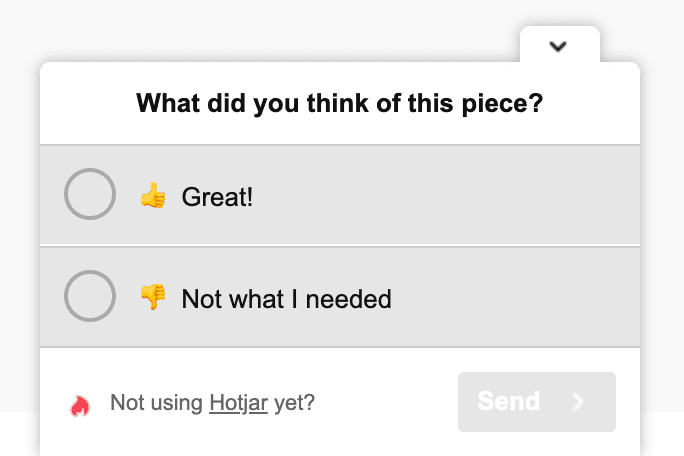
The most important part is following up and taking action based on what you learn. This process creates customer feedback loops, digs into the why behind their behavior, and helps you improve CX at every touchpoint.
5) Create a culture of customer experience
It takes more than a few surveys and customer interviews to continuously improve customer experience.
That next level is creating a culture of customer experience. Everyone in the company—including development, design, marketing, sales, operations, and support—should have customer experience as their goal.
When every team is customer-centric, it’s easier to make the right decisions—both about the product itself, and what to say to the customer who contacted you for support. This includes effort from executives, team leaders, and every employee.
One company that’s been the leader in customer centricity is Zappos. Back in 2010, Zappos’ former CEO, late Tony Hsieh, wrote in Harvard Business Review:
“Only about 5% of our sales happen by phone. But we’ve found that on average, our customers telephone us at least once at some point, and if we handle the call well, we have an opportunity to create an emotional impact and a lasting memory. We receive thousands of phone calls and emails every day, and we view each one as an opportunity to build the Zappos brand into being about the very best customer service.”
But to get that opportunity for emotional impact, just offering good customer service isn’t enough. Yes, efficient support over the customer’s channel of choice is key. But excellent products, a great buying experience, a website that’s intuitive to use—they’re part of that foundation, too.
Empathy is a big part of that, too. Consider Chewy, a pet supplies store. One of their customers shared an emotional story of a customer service rep who went above and beyond:
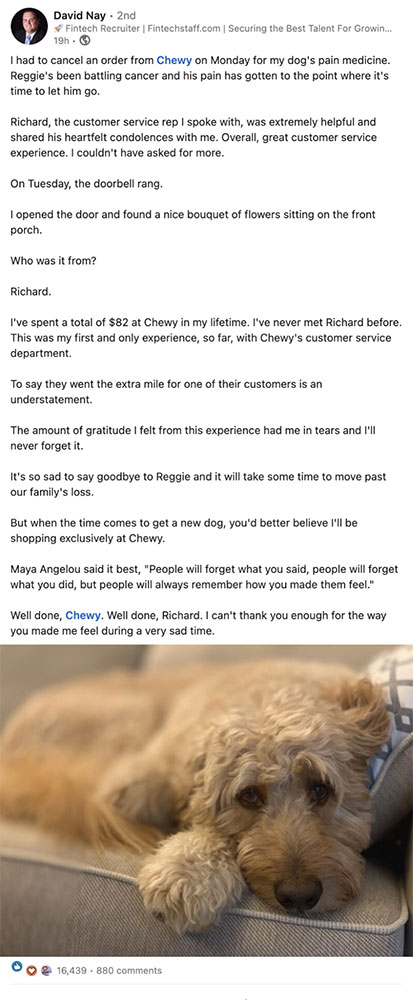
Notice that this customer only spent $82 with Chewy and only talked to customer support once. Chewy’s support team defaulted to going the extra mile regardless.
This means that people working at Chewy’s are empowered to make decisions based on what will create great customer experience, even if that means losing money (from a refund) and incurring an additional cost (for the flowers). A great company to take notes from.
Customer experience best practices
Almost 80% of consumers in the US say that a positive customer experience is one that’s convenient, helpful, fast, and friendly.
Let’s unpack some great CX practices to help you make this happen.
1) Let customers contact you on their channel of choice
Most customers—90% of them—want omnichannel service. That means they want a seamless experience whether they’re reaching out over email, SMS, live chat, social media, or phone.
Instead of forcing your customers into one or two specific channels, make it easy to contact you in every context and on every device.
Related: Omnichannel Contact Centers: Not Another Beginner’s Guide
2) Centralize all customer information
Next, integrate all these contacts and interactions in the back end. This will make two things possible:
- Customers will have all information they need in their account, like billing, past interactions with you, settings, features, and add-ons
- Support agents will be able to provide personalized service on every channel because of easy access to previous conversations
3) Enable self-service customer support options
Customers often need quick answers to simple questions, or prefer to explore solutions for problems at their own time. Without self-service support options, they won’t be able to do so—and they’ll put unnecessary pressure on your agents.
Set up options like knowledge bases, product FAQs, interactive product demos, problem-solving quizzes, and video tutorials.
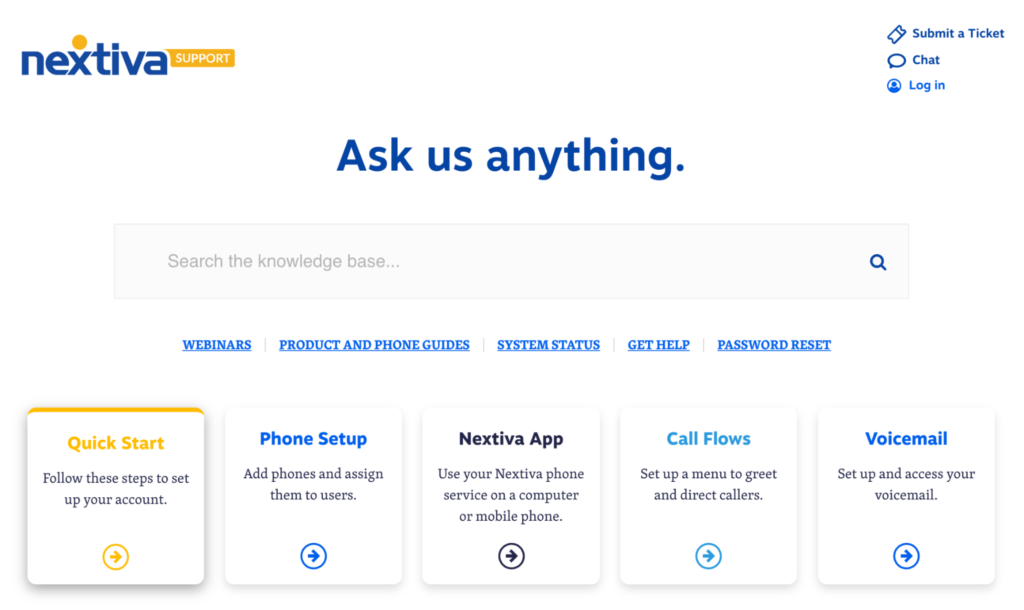
4) Offer 24/7 chatbot support
Another great way to support customers 24/7 is with automated chatbots. A chatbot can answer simple support requests and point to relevant resources.
It can also easily hand a conversation over to a support agent if the issue at hand needs human intervention, and collect all necessary information from the customer beforehand.
Related: 24/7 Support: The Business Leader’s Guide to Five-Star Service
5) Route inbound calls to the right agent
Set up rules and criteria to route incoming calls to the best person for a specific issue. This way, instead of repeating themselves to different agents, your customer can skip the wait and get their solution fast.
Some call routing criteria you can use includes:
- Time of day: Ideal for different time zones and business hours
- Caller ID: Includes phone number and location of the caller
- Auto-attendant selections: Input from the caller in the menu they were offered
- Interactive Voice Response (IVR): Artificial intelligence routes the call based on what the customer said
This ensures the call always ends up in the right department and with the agent most skilled for the issue at hand.
6) Have the right number of support agents available
Use the number of support conversations and the average handle time (AHT) to understand how many support agents you need at any given moment. Also pay attention to seasons of peak demand, as well as dips in support requests, to adjust when necessary.
This way, you can make sure your customers are always looked after quickly, while also not overstaffing your customer support center (and wasting money in the process).
7) Give consistent answers and solutions across all channels and touchpoints
Does your knowledge base match your pricing and feature pages? Are all support agents working off the same policies and procedures? Are webinars and product demos showing the same product versions?
If customers often see conflicting information between different assets, they’ll find it hard to trust you. Prioritize consistency across the entire customer journey and every touchpoint.
8) Make buying seamless, and usage delightful
Regularly review the steps people have to go through to become paying customers. Are forms easy to fill out? Is the payment process straightforward? Can customers choose from multiple payment options? Is it easy to download receipts for tax purposes?
From there, focus on the experience with the product itself. Consider everything from onboarding tips and emails to understanding what creates that first feeling of success within the product.
9) Regularly take and review customer feedback
Customer feedback should never be a finished project. Regularly take the time to explicitly ask for feedback using surveys and interviews in key points of the customer journey.
Don’t forget about the less obvious feedback customers leave all over the internet: social media, Reddit, industry forums, Quora, and reviews. Every piece of feedback is a chance to improve customer experience in the long run.
Poor customer experience practices
On the flipside, there are customer experience practices to avoid. Here are some to steer clear of, spanning across the entire customer lifecycle:
- Dark patterns: Obstacles and tricks on websites that deceive users and customers. Examples of dark patterns include trick questions, hidden costs, forced continuity (e.g. free trial to paid account), and misdirection, and can seriously damage customer trust.
- Lack of empathy: Lack of understanding for customer frustrations and complaints. It’s human to make a mistake—instead of denying or dismissing it, it’s better to show empathy and true desire to help the customer.
- Long wait times: Lack of respect for the customer’s time. Making them wait for days or jump between channels (for example, from Twitter DMs to email and then phone) will make them feel like you don’t want to help them.
- Confusing information: Giving the customer a different answer every time they look for one. This happens when there’s no single source of truth your sales and support reps can use, and no support etiquette.
- Letting customer issues go unresolved: Lack of a resilient central place to track all customer issues and resolve them quickly. When issues slip through the cracks, it also means support metrics (like resolution rate and NPS) are being ignored.
How customer experience differs from customer service
Make sure you don’t confuse customer experience for customer service.
Customer service includes isolated events when a customer reaches out for support. Customer service is usually triggered by the customer and can happen before, during, and after the purchase. It involves only customer-facing departments.
Customer experience is the complete sum of customer’s interactions with your business. This can span from consuming content, viewing product pages, and interacting with ads to signing up for a demo, speaking with sales reps, and using the product.
It extends beyond your customer-facing teams into product, marketing, and leadership. CX is about how customers feel about your brand as a whole.
Customer experience metrics to start tracking
The best way to continue to improve your customer experience is to diligently track it.
There’s no single metric to measure your CX efforts. Instead, here’s a list of metrics to use on your reporting dashboard so you can monitor your CX pulse:
- Net Promoter Score (NPS): NPS asks customers to rate how likely they are to recommend your company to a friend or colleague. It’s a strong indicator for growth from word of mouth and implies the level of customer experience.
- Customer Satisfaction Score (CSAT): Customer satisfaction level on a scale of choice, often 1-5 or very unsatisfied to very satisfied. Companies ask for this type of feedback after successfully solving an issue or helping the customer achieve their goal in the product.
- Customer Effort Score (CES): CES measures the ease of service experience with your company. Again, it can be measured on different scales, often on a 5-point or a 7-point scale.
- Time To Resolution (TTR): TTR measures the average time from starting a customer interaction and solving the issue they needed help with. It’s a strong indicator of efficiency (or lack thereof), as well as of outliers like complex cases, and processes you can improve in your customer communications.
- Customer Lifetime Value (CLV): The measure of the average revenue a customer generates during their time with your company. A great metric to track over a long period, and in tandem with other CX metrics, to understand the return on your investment into customer experience.
- Customer Retention Rate (CRR): The number of customers you retain over a certain period of time. It reflects how your customers feel after purchasing your product and how successfully you turn them from new customers into loyal, long-term users.
- Customer Churn Rate (CCR): The opposite of CRR, it shows the percentage of lost customers over a period of time. Churn rate can add some extra insights because it also includes free trial churns.
Related: Top 30 Call Center Metrics To Supercharge Customer Satisfaction
Start with the foundation of exceptional CX
To excel at CX, you need a strong baseline—a toolkit that makes it easy for customers to reach you and that you can build upon.
A virtual phone system is exactly that. It helps you implement customer experience best practices like call routing and having a single hub for customer information and previous interactions.
Pair it with a culture of customer experience, and you’ll soon be unstoppable. Enable empathy and connection, and make it easy to be your customer. Your customers will reward you for it.

